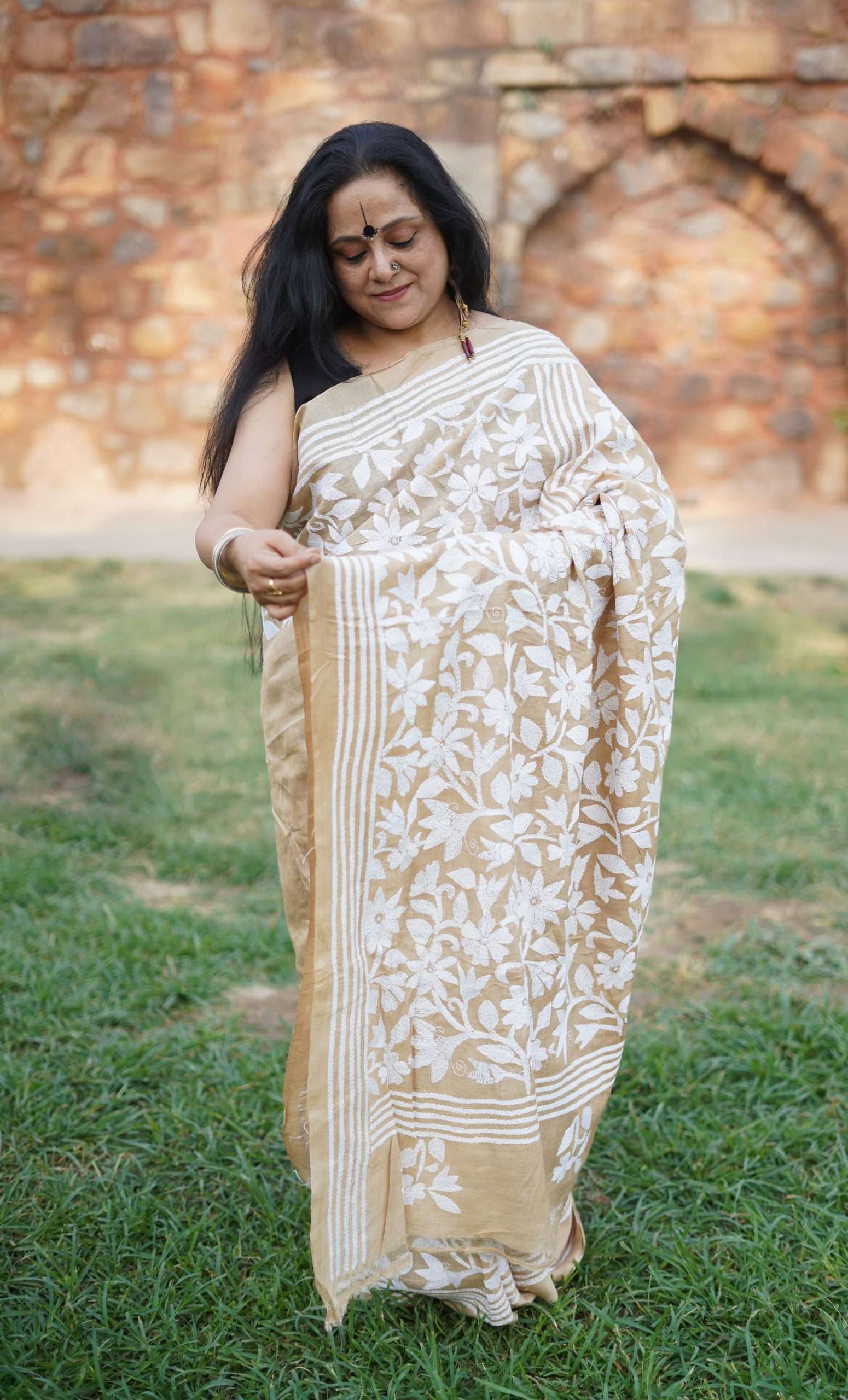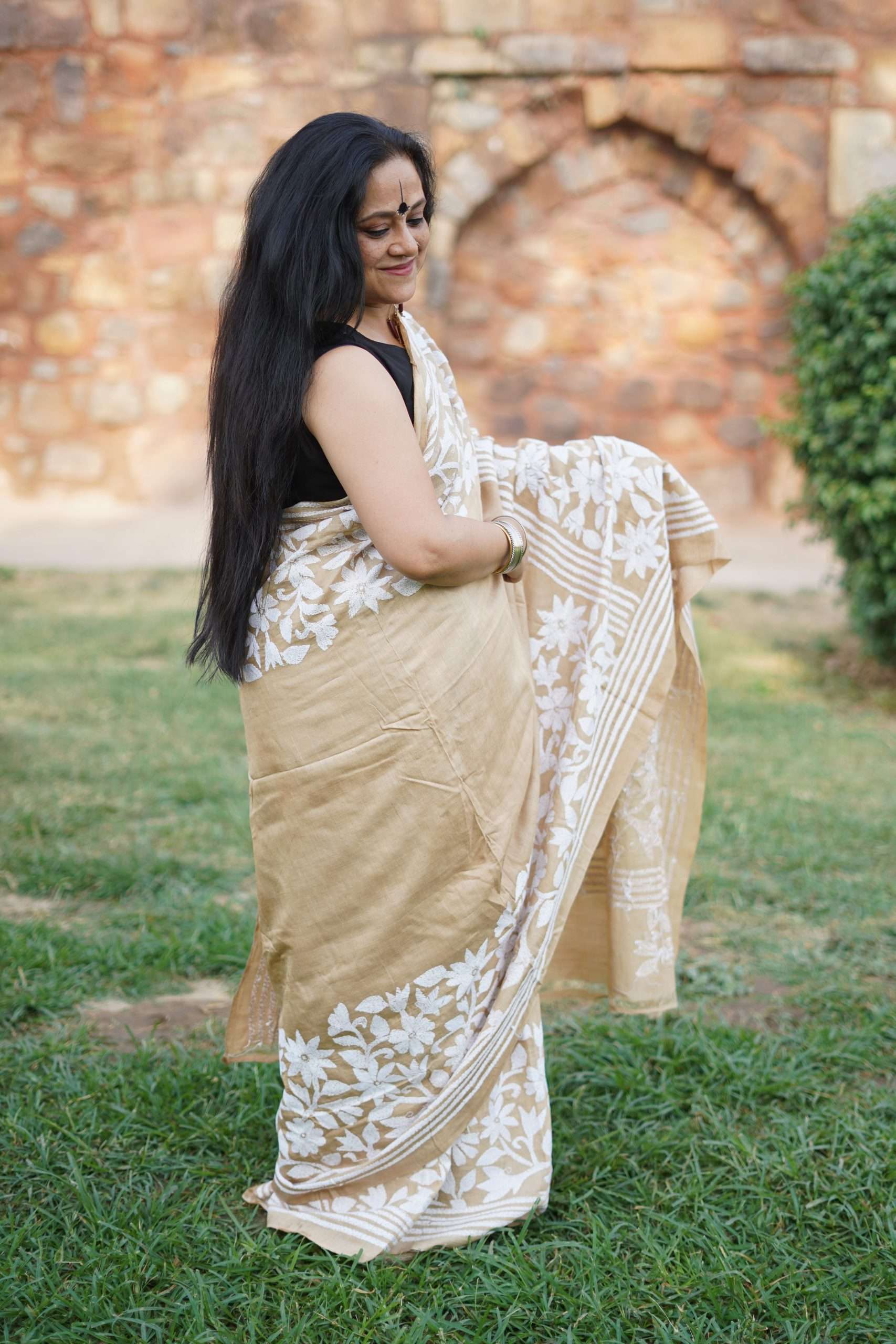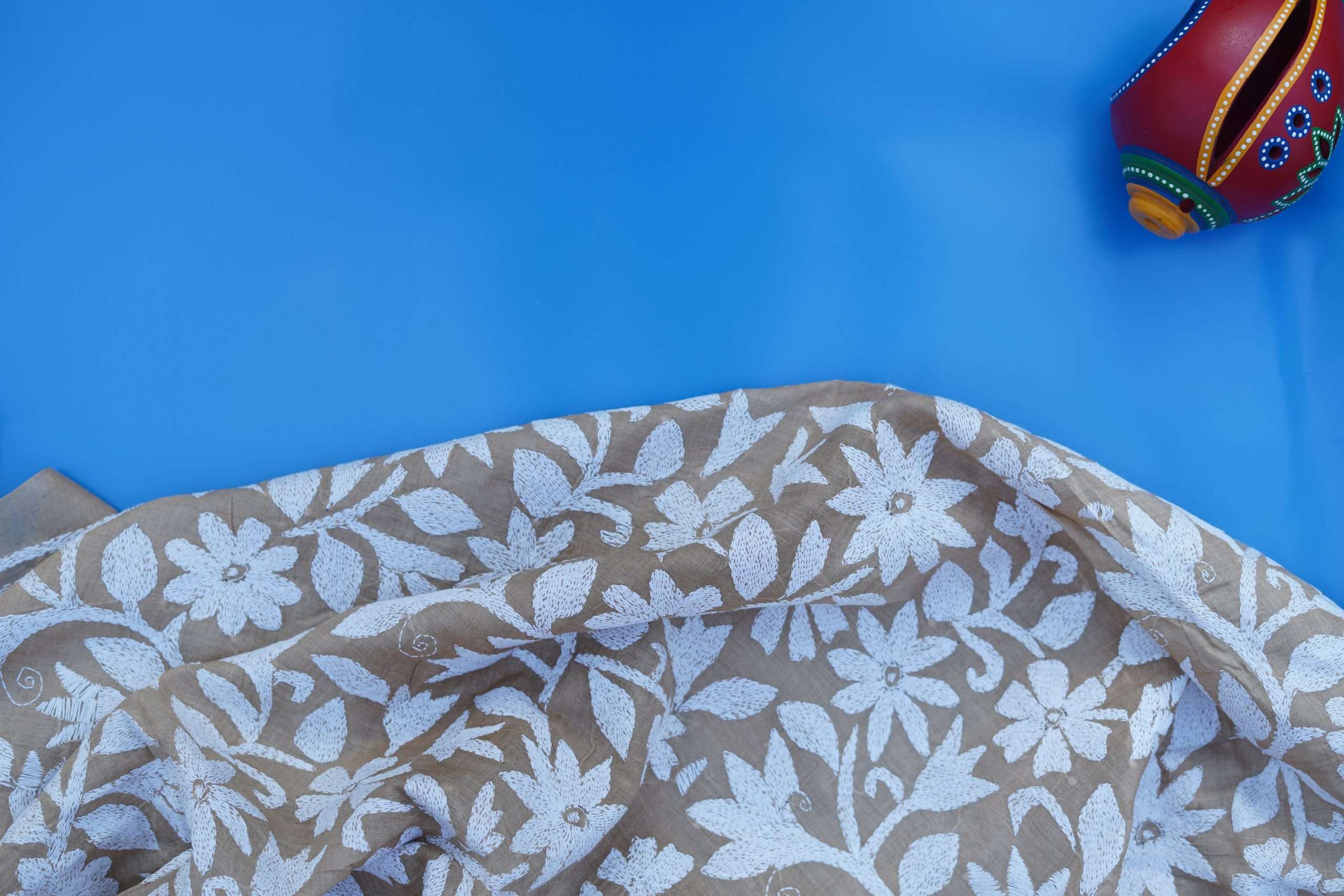Katha work, also known as Kantha work, is a traditional embroidery technique originating from the Indian subcontinent, particularly from the regions of West Bengal and Bangladesh. Here’s an overview of Katha work:
Katha work involves hand-stitching intricate designs onto fabric using running stitches. The stitches are often made in straight lines or in geometric patterns, creating a quilted effect on the fabric. The running stitches are typically done in a contrasting color to create a visually appealing effect.
Katha work is traditionally done on cotton or silk fabric. The base fabric can vary in color, texture, and thickness depending on the desired outcome of the embroidery. Colorful threads, usually silk or cotton, are used for the stitching, adding vibrancy and richness to the designs.
Katha work designs can range from simple motifs such as flowers, birds, and geometric shapes to more elaborate patterns depicting scenes from everyday life, mythology, or nature. The designs are often inspired by the local culture and traditions of the region where the embroidery is practiced.
Katha work is commonly used to embellish various textile items, including sarees, dupattas, salwar suits, quilts, cushion covers, and wall hangings. It adds a distinctive and artisanal touch to these items, making them highly valued for their beauty and craftsmanship.
In addition to their decorative appeal, Katha work motifs often carry symbolic meanings. For example, motifs like fish may symbolize prosperity and abundance, while motifs like flowers may symbolize beauty and fertility. These symbolic meanings add depth and significance to the embroidered designs.
Katha work has a rich cultural heritage and holds significant cultural and social value in the regions where it is practiced. It is often associated with traditions of storytelling, as the embroidered designs may depict narratives and folklore passed down through generations.
Overall, Katha work is cherished for its intricate craftsmanship, vibrant colors, and deep-rooted cultural significance, making it a beloved and enduring tradition in the Indian subcontinent.














Reviews
There are no reviews yet.